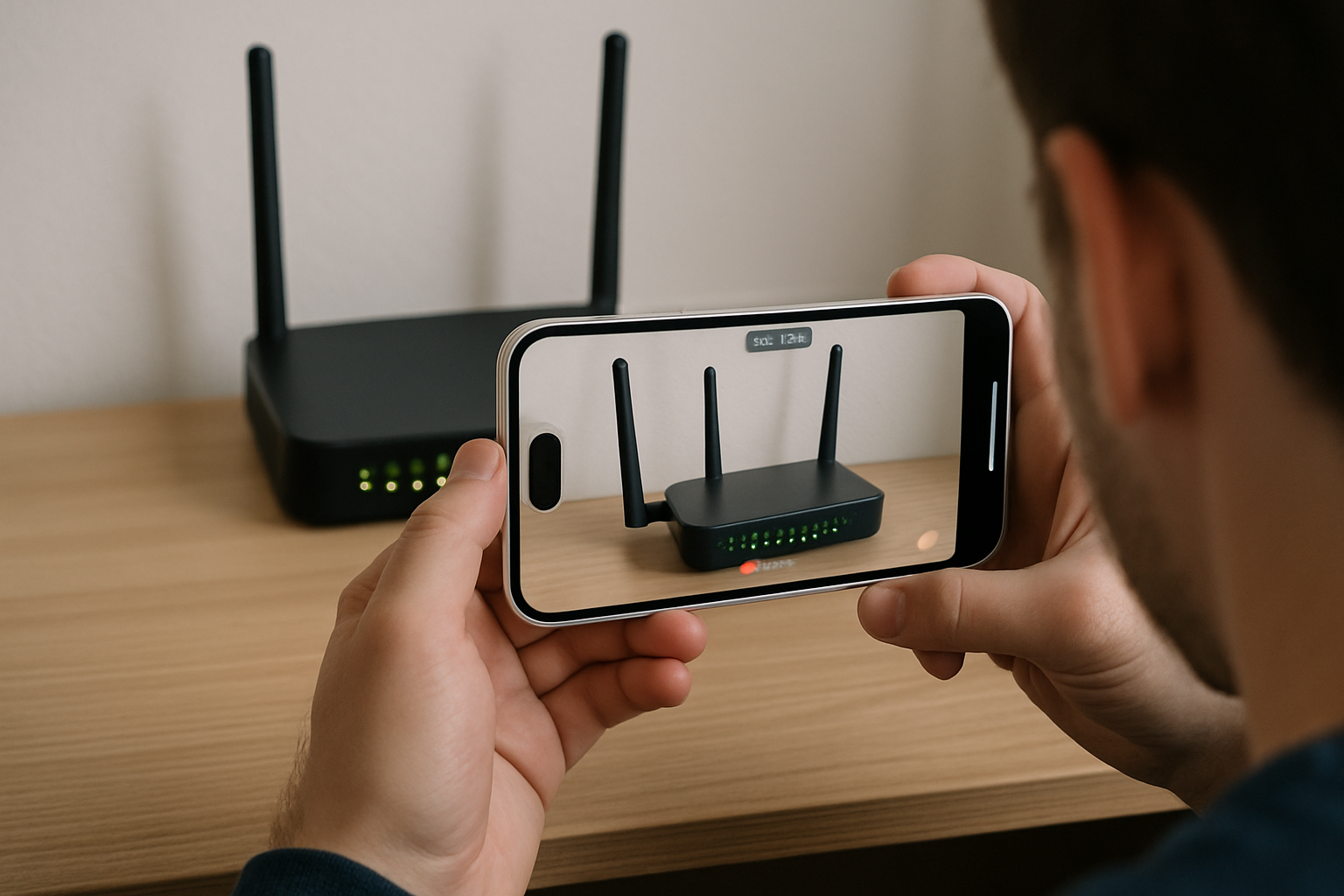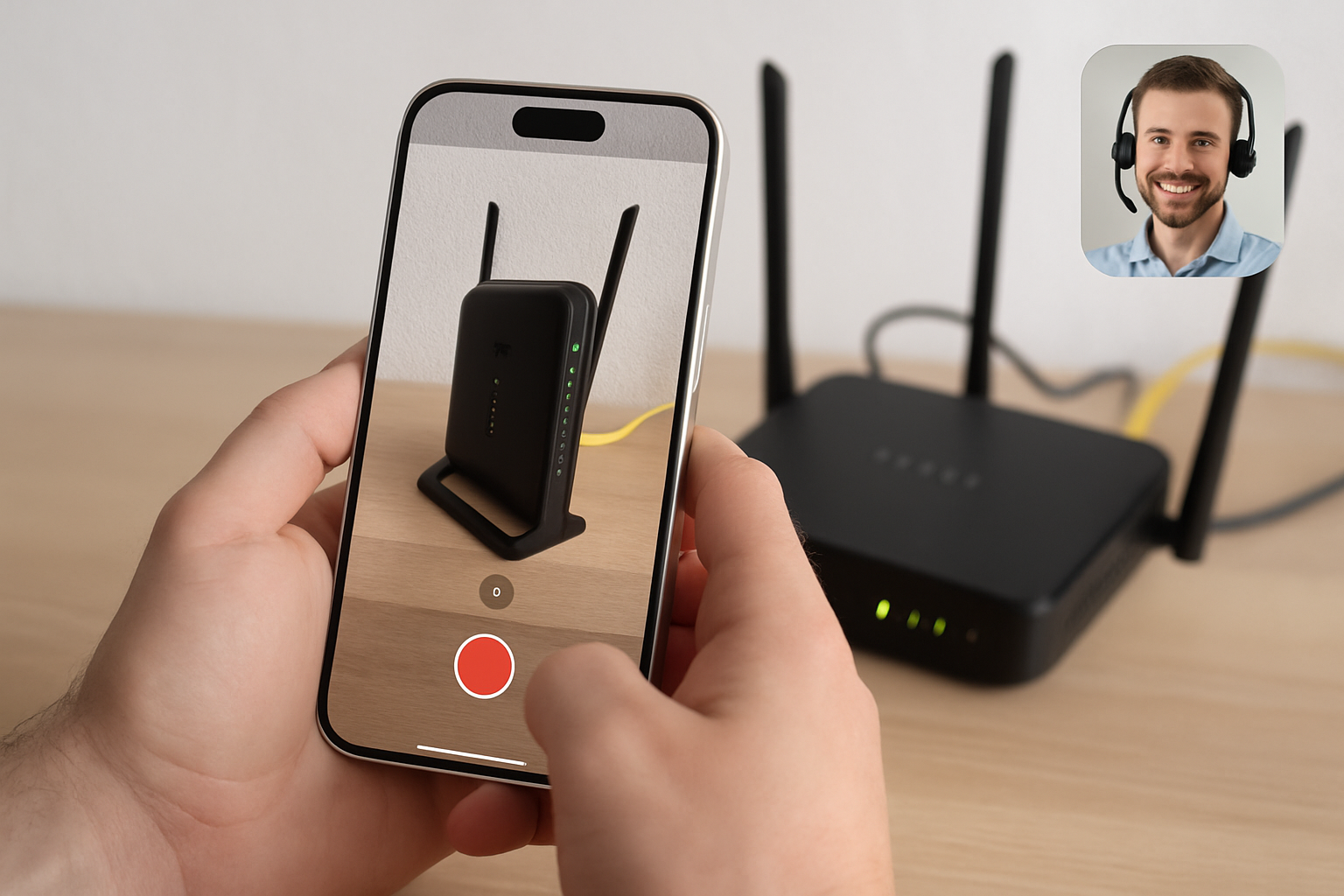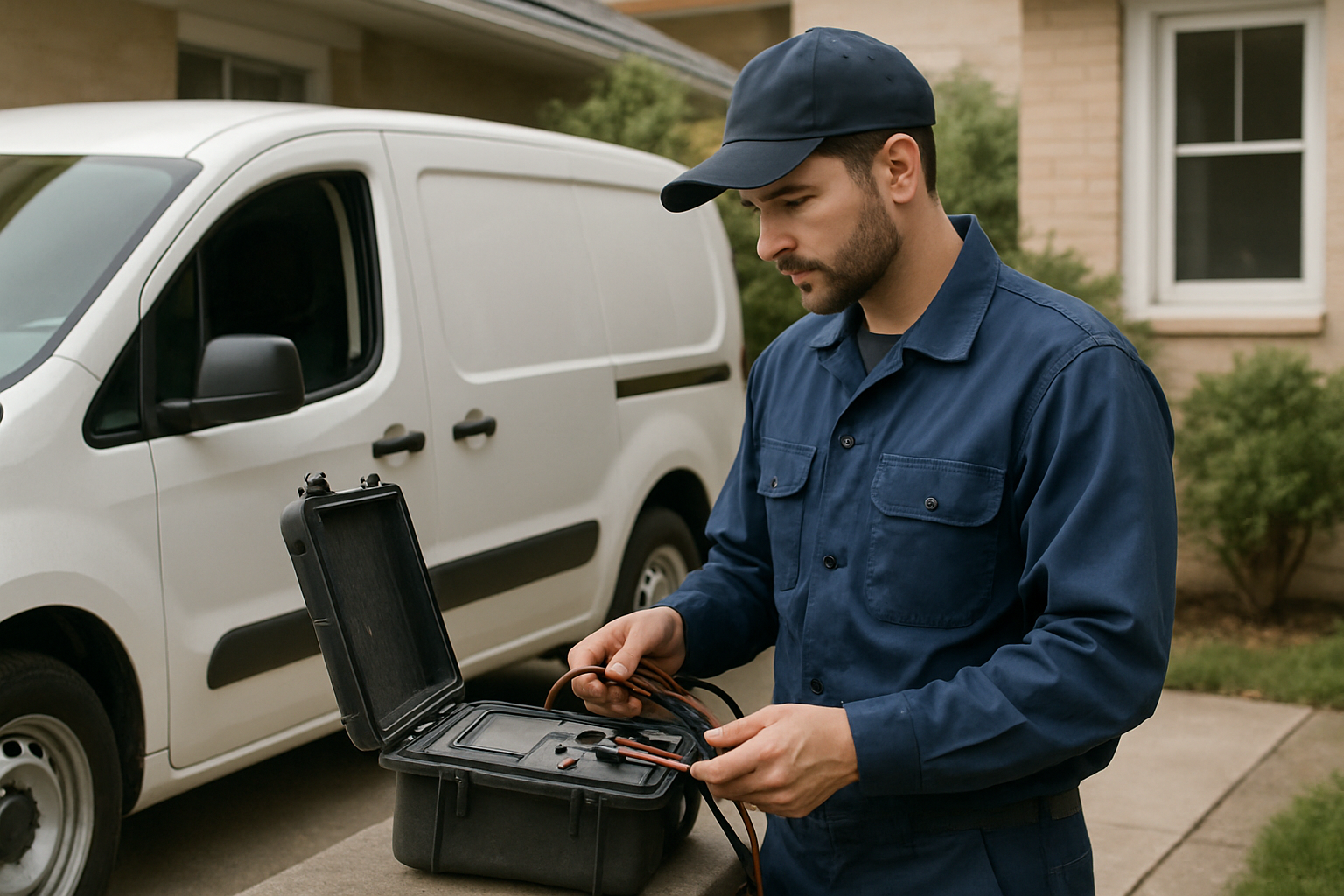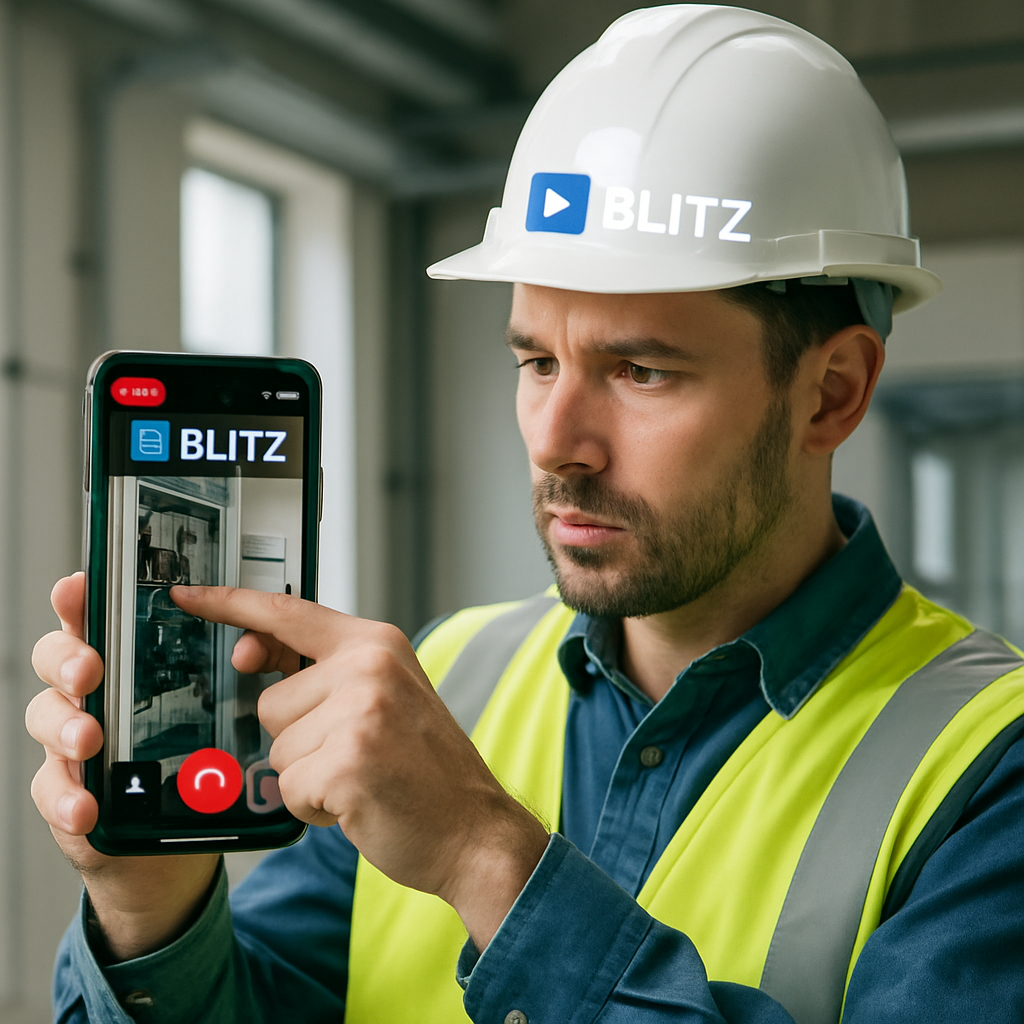Improving First-Time Fix Rates with Fewer Truck Rolls
Let’s be honest—nothing frustrates a customer more than waiting for a technician to show up… only for the problem to come back a week later. For service providers, this isn’t just annoying—it’s expensive. Every on-site visit, or “truck roll,” costs money. Between labor, fuel, and scheduling, repeated trips add up fast.
The solution? Improving your first-time fix rate. The higher your first-time fix rate, the fewer truck rolls you need—and the happier your customers will be.

Why Repeat Truck Rolls Are a Problem
Imagine this: a customer calls about a cable outage. A technician comes to the house, fixes it, and leaves. Two days later, the same issue pops up. Not only is the customer frustrated, but now your team has to schedule another visit, doubling labor costs and wasting time that could’ve been spent solving new problems. Multiply this across hundreds or thousands of customers, and the numbers get staggering.
Repeat truck rolls don’t just cost money—they damage trust. Customers start feeling like your service isn’t reliable. And let’s face it, in a world where people can switch providers with a click, loyalty is everything.

The Power of Visual Guidance
Here’s where live visual support comes in. By giving first-line support the ability to see what’s happening in real-time—via video chat, AR tools, or remote diagnostics—technicians can guide customers step by step to fix problems without leaving the office. Instead of sending someone on-site, support agents can:
Identify the exact issue quickly
One of the biggest challenges in customer service is diagnosing problems accurately. Traditionally, a support agent would have to rely on the customer’s description, which can be vague or incomplete. With remote visual assistance, the agent can actually see what’s happening in real-time—whether it’s a blinking router light, a misconfigured cable box, or a disconnected wire. This allows them to pinpoint the exact issue almost instantly.
For example, instead of asking a customer “Which lights are blinking?” and guessing the problem, the agent sees the device and immediately knows, “Ah, the ethernet cable isn’t seated properly,” saving precious time and avoiding misdiagnosis.

Walk customers through troubleshooting in real-time
Once the problem is identified, the real magic happens: guiding the customer step by step to fix it. Through live video, the agent can show exactly what needs to be done and watch as the customer executes it. It’s like having a technician right there in the room.
For instance, if a customer’s home Wi-Fi isn’t working, the agent can visually direct them to unplug the modem, check connections, and reset the device, all while making sure they’re doing it correctly. This reduces confusion, prevents mistakes, and gives customers confidence that the issue will be resolved quickly.

Verify that each step is completed correctly
Diagnosis and instruction alone aren’t enough—confirmation is key. Remote visual support allows the agent to see every step being performed, ensuring nothing is skipped or done incorrectly. For example, if troubleshooting a cable box requires a specific sequence of button presses, the agent can watch as the customer completes each action and immediately correct them if needed.
This not only increases the first-time fix rate but also minimizes repeat truck rolls, since the fix is actually applied correctly the first time. Customers feel reassured, and your team avoids unnecessary follow-ups or repeat visits.
This approach doesn’t just reduce truck rolls—it dramatically improves first-time fix rates. Customers get their problems solved immediately, and your team frees up time to handle more cases efficiently.

Real Results You Can Measure
Companies using remote visual assistance tools have reported impressive gains:
- Reduced truck rolls by up to 30-50%
- Faster resolution times, sometimes cutting calls from 45 minutes to 10-15 minutes
- Higher customer satisfaction, with first-time fixes leading to fewer complaints and more positive feedback
In other words, smarter support equals more money saved, happier customers, and less stress for your tech teams.
Training and Empowering Your Frontline
Of course, technology alone isn’t enough. To really boost first-time fix rates, your frontline support teams need proper training in:
- Using live visual tools effectively
- Troubleshooting step by step with the customer on video
- Recognizing when a truck roll is truly necessary
Empowered agents who can see the problem, guide the customer, and confirm the fix are far more efficient—and far more satisfying to work with—for both your team and your customers.

When a Truck Roll Is Still Necessary
Let’s be clear—remote visual support isn’t a magic wand. Some situations still require an on-site technician. But by filtering out unnecessary truck rolls, you focus your field team on the cases that truly need them. That means fewer wasted trips, better planning, and more productive technicians.
Takeaway
Reducing repeat truck rolls isn’t just about cutting costs—it’s about creating a better experience for your customers and your team. By combining live visual support, strong training, and smart decision-making, you can solve more problems on the first attempt, minimize unnecessary trips, and build loyalty that lasts.
The field service industry is evolving, and the companies that adopt smarter, video-enabled support will not only save money—they’ll win customers for life.
Want to see how remote visual support can improve your first-time fix rate and cut truck rolls? Schedule a demo with Blitzz today and watch your customer satisfaction soar.
Review these FAQs
How do fewer truck rolls improve first-time fix rates?
By diagnosing issues remotely before dispatching a technician, your team can identify the exact tools, parts, and expertise needed. This preparation results in faster, more accurate on-site fixes and significantly reduces repeat visits.
What technologies help reduce unnecessary truck rolls?
Remote visual assistance, AI diagnostics, and live video support allow agents to inspect issues virtually. These tools help determine whether the problem can be resolved remotely or requires an in-person visit, optimising your field resources.
Can first-time fix rates really increase without sending more technicians?
Yes. When remote support resolves simpler issues and filters out avoidable truck rolls, technicians can focus on complex jobs. This leads to higher-quality repairs, improved scheduling, and more first-time fixes.
How does improving first-time fix rates reduce operational costs?
Fewer truck rolls mean savings on fuel, labour, and travel time. Higher first-time fix rates also reduce repeat callouts, which lowers overall service costs while boosting customer satisfaction.
What industries benefit most from improving first-time fix rates?
Telecom, HVAC, utilities, security systems, home appliances, and any business with field service technicians gain the most. These industries can dramatically cut costs and improve customer experience with smarter remote diagnostics and better-prepared technicians.



